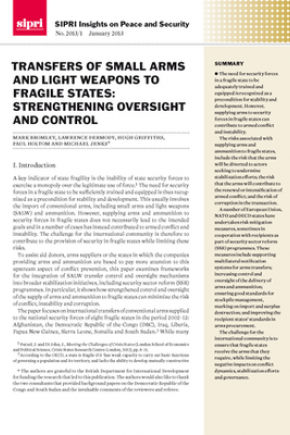Transfers of Small Arms and Light Weapons to Fragile States: Strengthening Oversight and Control
The need for security forces in a fragile state to be adequately trained and equipped is recognized as a precondition for stability and development. However, supplying arms to security forces in fragile states can contribute to armed conflict and instability.
The risks associated with supplying arms and ammunition to fragile states include the risk that the arms will be diverted to actors seeking to undermine stabilization efforts; the risk that the arms will contribute to the renewal or intensification of armed conflict; and the risk of corruption in the transaction.
A number of European Union, NATO and OECD states have undertaken risk mitigation measures, sometimes in cooperation with recipients as part of security sector reform (SSR) programmes. These measures include supporting multilateral notification systems for arms transfers; increasing control and oversight of the delivery of arms and ammunition; ensuring good standards for stockpile management, marking on import and surplus destruction; and improving the recipient states’ standards in arms procurement.
The challenge for the international community is to ensure that fragile states receive the arms that they require, while limiting the negative impacts on conflict dynamics, stabilization efforts and governance.
I. Introduction
II. The risks of supplying SALW to fragile states
III. Mitigation measures
IV. Conclusions



